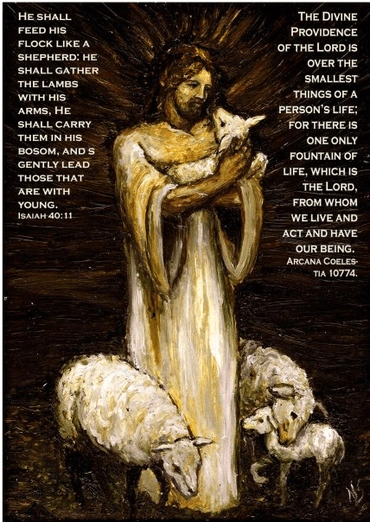897. The subject here being the regenerate member of the Ancient Church, 'seeing means acknowledging and possessing faith. That 'seeing' has this meaning becomes clear from the Word, as in Isaiah,
You did not look to the Maker of it, and Him who fashioned it long ago you did not set. Isaiah 21:11.
This refers to the city of Zion. 'Not seeing Him who fashioned it long ago' means not even acknowledging, let alone possessing faith. In the same prophet,
Make the heart of this people fat and their ears heavy, and plaster over their eyes, lest they see with their eyes and hear with their ears, and their heart understands and they turn again and are healed. Isaiah 6:10.
'Seeing with the eyes' stands for acknowledging and possessing faith. In the same prophet,
The people walking in darkness have seen a great light. Isaiah 9:2.
This refers to gentiles who received faith, as does the present verse which says that 'he removed the covering, and saw out'. In the same prophet,
On that day the deaf will hear the words of a book, and out of thick darkness and out of darkness the eyes of the blind will see Isaiah 19:18.
This refers to the conversion of gentiles to faith. 'Seeing' stands for receiving faith. In the same prophet,
Hear, you deaf, look and see, you blind. Isaiah 41:18.
Here the meaning is similar. In Ezekiel,
They have eyes to see but they see not; they have ears to hear but they hear not because they are a rebellious house. Ezekiel 12:2.
This stands for people who are capable of understanding, acknowledging, and possessing faith but who do not wish to. That 'seeing' means possessing faith is quite clear from the representation of the Lord by the bronze serpent in the wilderness when everyone who beheld it would be healed, and of which it is said in Moses,
Set a serpent on a standard, and it will happen that everyone who has been bitten, when he sees it, will live So it happened, if a serpent had bitten a man, when he saw the serpent of bronze, that he lived. Numbers 21:8-9.
Anyone may see from this that 'seeing' means faith, for what else can 'seeing' be in this instance than something representative of faith in the Lord? This point is clear also from the fact that Reuben, Jacob's firstborn, who was given that name from the word 'seeing', in the internal sense means faith. See what has been stated already about the firstborn of the Church in 352, 367.







